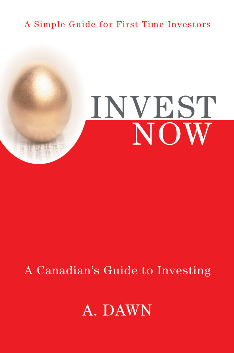Understand Different Kinds of Credit Card Rewards
First Published Date: October 29, 2015
Long gone are those days when credit cards were a luxury, not a necessity. We live in a time now where credit cards are intertwined from waking up to going to sleep at night – at every stage of modern lives. And why not? The protection, benefits, and rewards credit cards offer you are hard to ignore. If we are to use credit cards on a daily basis anyway, why not take advantage of it by maximizing our credit card rewards?
To get the most out of your credit cards, you need to understand how different kinds of rewards work. Today, I will go over the rewards basics you need to know before making your rewards selections. One important note I would like to point out is that this article is not about How to Pick Travel Rewards Credit Cards. I will write a separate article on travel rewards cards, as you need to understand first how different kinds of rewards work before moving to picking a travel rewards credit card.
Three Types of Rewards Cards
There might be 100s of different rewards credit cards, but if you break them down into categories, all of them will fall within these three categories:
Cash-Back Rewards Credit Cards
Travel Rewards Credit Cards
Other Rewards Credit Cards
Let’s decipher these three one by one.
Cash-Back Rewards Credit Cards
As simple as it sounds, you will receive cash back for each dollar you spend on your credit card. Credit card companies will give you direct cash amount or points (that represents cash amount) for your spending. The rate of return is usually 1 to 2 percent. However, there are credit cards that offer 3 to 4 percent cash back on selected categories such as grocery, drug store purchases, etc. Example: Scotia Momentum Visa Infinite card.
Cash-Back rewards are easy to understand and unlike travel rewards cards, you don’t need to master the ins and outs of various airline or hotel loyalty programs. Pick Cash-Back rewards if you don’t travel or don’t want to deal with travel rewards. However, keep in mind that Cash-Back rewards do not offer the most value you can get out of your credit cards like travel rewards credit cards do and one type of travel rewards card does offer simple rewards that are easy to understand (and can still provide more value than cash rewards) – which I will discuss below.
Travel Rewards Credit Cards
The travel rewards category is where you can get maximum return for your dollars that you spend on credit cards, but it can be quite complicated based on what kind of travel rewards you are dealing with. Let’s talk about the simplest travel rewards cards first.
Proprietary Rewards Points – These cards offer points (that offer fixed value, usually 1 cent =1 point) which can be redeemed through the credit card company for any flights, hotels, or travel-related matters. The beauty of proprietary rewards points is that you don’t need to spend time mastering various loyalty programs. However, your returns are usually the lowest among other types of travel rewards because you are always getting a fixed value for each point. Still, proprietary rewards points are a good option for those who want to avoid cash-back rewards cards and want a simple travel rewards credit card. Example: BMO World Elite MasterCard.
Cobranded or Loyalty Program Rewards Points – Credit cards that offer these kinds of rewards points are hotel travel credit cards, airline travel credit cards, etc. These types of cards can be cobranded with specific hotels, airlines, or their loyalty or frequent-flier programs. As these cards offer a variety of programs you can pick from, this is where you can make the most money. If you are knowledgeable about the loyalty program rewards credit cards offering, your return can be easily 2-4 percent. If you are extremely knowledgeable about the loyalty program rewards points, you can make lucrative returns such 4 to 8 percent return on your credit card spending. Example: TD Aeroplan Visa Infinite Card, Starwood Preferred Guest Card.
Hybrid Rewards Points – This is a combination of the two types of travel rewards discussed above. Credit cards offering hybrid points offer tremendous flexibility because you can use these rewards points to offset your travel costs through credit card company or you can transfer your points to various other hotel or flight points if you require. So these types of credit cards can work for both novice and expert users. Keep in mind that you will get more value for your dollar when you transfer to loyalty programs, rather than using points to offset travel expenses through a credit card company. Example: American Express Gold Rewards Card.
Other Rewards Credit Cards
Coffee shop and supermarket cards, gas station and automaker cards, and any other bizarre credit cards you can possibly think of that do not fall under cash and travel category fall under the other rewards category. These credit cards are only good when you want to shop and use your rewards at specific stores or for specific reasons. The rewards are not that great and options and features are limited for these types of cards. Example: Tim Hortons Double Double Visa Card.
Conclusions
So now you know the basics of different types of rewards credit cards. I will summarize everything in brief.
Cash-Back Rewards: Easy and simple to understand, but returns may not be that great. Go with this if you don’t travel and want hassle-free rewards from credit cards.
Travel Rewards: Can be complicated, but offers excellent returns. Go with this if you travel and want to get maximum rewards out of your credit cards.
Other Rewards: If you want to stick to specific stores or products and don’t mind whatever returns you get, this is for you.
What’s Next
After reading this article, if you would like to know more on Travel Rewards Credit Cards, you can read my next article How to Pick a Travel Rewards Credit Card. I will elaborate further on how to pick travel credit cards. I am still working on this article and will provide a link once completed.








